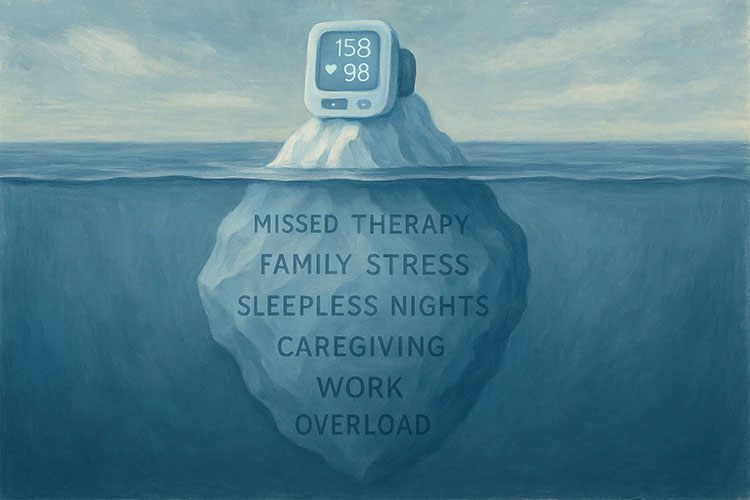
5 ways that Remote Patient Monitoring helps to manage chronic diseases
Healthcare Providers are looking for ways to improve chronic disease management. Using Remote Patient Monitoring (RPM) offers great benefits for both providers and for patients.
In the U.S., the number of patients diagnosed with chronic diseases increases each year. Chronic conditions, such as diabetes, COPD and hypertension increase yearly. Medical professionals are seeking new ways to manage these chronic conditions cost-effectively. While, at the same time, improving patient care.
One answer is Remote Patient Monitoring (RPM). Let’s take a brief look at what RPM is, and how it supports chronic disease management in the long term.
Remote Patient Monitoring
Remote Patient Monitoring is a system where patients use a medical device at home. The information from that medical device is sent to medical professionals. They can track the healthcare information, gaining insights. Better diagnoses and plans can be developed from this extra medical information.In other words, there’s no need for patients to visit the doctor’s office to test their blood pressure or insulin levels. With RPM, doctors and nurses track these numbers remotely.
Examples of RPM technology include:
- Heart rate monitors
- Blood pressure monitors
- Glucose meters
- Voice-based apps
- Medication alerts
The technology of RPM allows clinicians to manage chronic diseases. The patient remains in the comfort of their home. The chronic diseases include:
- Type 1 and Type 2 diabetes
- Uncontrolled hypertension
- Chronic kidney disease (CKD)
- Heart failure
- Chronic obstructive pulmonary disease (COPD)
Is remote care good for medical practices? Here are the five main reasons healthcare providers should invest in RPM technology.
1: Reduced hospital admissions
RPM reduces hospital admissions and ER visits. This is true for COPD and heart disease. RPM gives healthcare professionals patient information daily in real-time. Medications can be altered without patients visiting the hospital. Healthcare professionals can monitor blood pressure, heart rate, or oxygen saturation daily.
2: Increased patient responsibility
Remote Patient Monitoring devices put patients back in control of their own health. This is key to effective disease management in the long term. Patients can track their own vital stats throughout the day. The daily monitoring reports are available for the patient to see. A patient can see immediate changes in their health readings.
Being involved in their healthcare is a great motivator for patients. With more knowledge, they are more likely to finish treatment programs.
3: Reduced demand for healthcare professionals
Chronic conditions place a considerable burden on healthcare providers. RPM helps clinicians manage their time and resources more effectively. Studies show that patients who use RPM have a 41 percent fewer telephone calls to their doctor, and 47 percent fewer patient visits. Doctors can concentrate on their sickest patients with fewer interruptions. It is a better allotment of resources.
4: Improved acute management
Gone are the days when patients need to sit in long queues in the ER or the doctor’s office for a simple medication change. Doctors use RPM to tell diabetes patients to adjust their insulin levels if their blood glucose levels become unstable. It’s far less likely that they’ll have severe symptoms if they can address the issue immediately.
5: Streamlined clinical care
RPM leads to a more effective, streamlined patient experience. Patients can manage their condition at home without incurring expense visiting a doctor. Clinicians can be more productive during their working hours. RPM makes healthcare more efficient and convenient but no less effective.
The future for chronic disease management
There’s no doubt that RPM makes it easier and cheaper to manage chronic conditions. It can do this without ever compromising on patient care. For people with chronic diseases, RPM enables clinicians to give them the support they need. This reduces hospital admissions and re-admissions. This frees up hospital beds and personnel for the sickest individuals.
Medek RPM is a national leader in the industry. Help your practice and help your patients by starting a conversation with a Medek Representative today!





